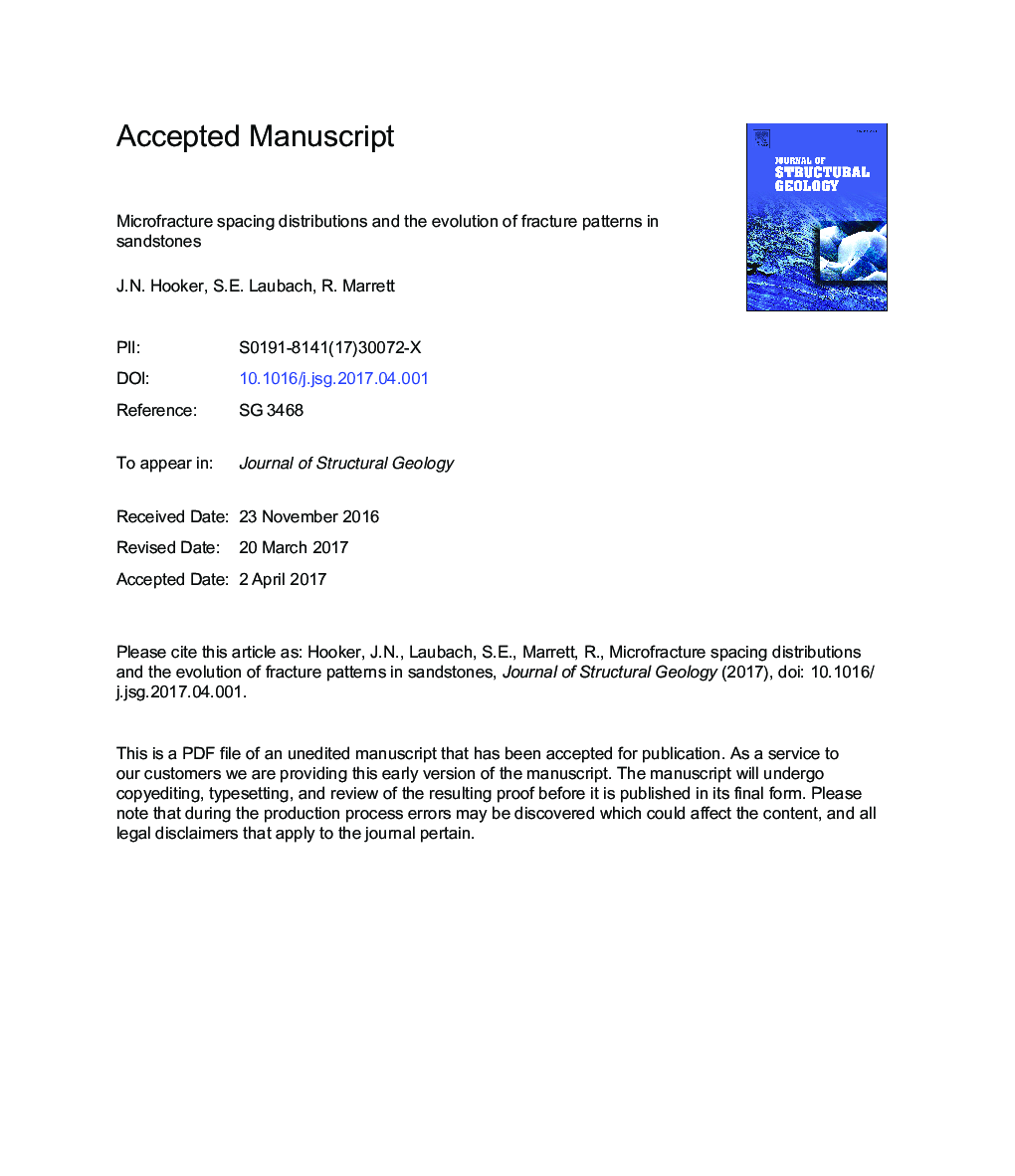| Article ID | Journal | Published Year | Pages | File Type |
|---|---|---|---|---|
| 8914471 | Journal of Structural Geology | 2018 | 43 Pages |
Abstract
Natural fracture patterns in sandstone were sampled using scanning electron microscope-based cathodoluminescence (SEM-CL) imaging. All fractures are opening-mode and are fully or partially sealed by quartz cement. Most sampled fractures are too small to be height-restricted by sedimentary layers. At very low strains (<â¼0.001), fracture spatial distributions are indistinguishable from random, whereas at higher strains, fractures are generally statistically clustered. All 12 large (NÂ >Â 100) datasets show spacings that are best fit by log-normal size distributions, compared to exponential, power law, or normal distributions. The clustering of fractures suggests that the locations of natural factures are not determined by a random process. To investigate natural fracture localization, we reconstructed the opening history of a cluster of fractures within the Huizachal Group in northeastern Mexico, using fluid inclusions from synkinematic cements and thermal-history constraints. The largest fracture, which is the only fracture in the cluster visible to the naked eye, among 101 present, opened relatively late in the sequence. This result suggests that the growth of sets of fractures is a self-organized process, in which small, initially isolated fractures grow and progressively interact, with preferential growth of a subset of fractures developing at the expense of growth of the rest. Size-dependent sealing of fractures within sets suggests that synkinematic cementation may contribute to fracture clustering.
Related Topics
Physical Sciences and Engineering
Earth and Planetary Sciences
Geology
Authors
J.N. Hooker, S.E. Laubach, R. Marrett,
